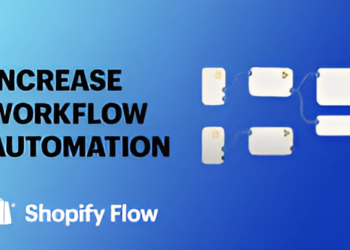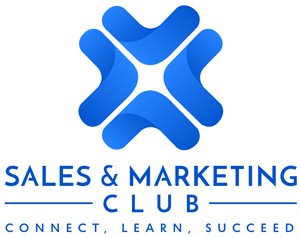“The key to successful negotiation is not about pushing your agenda but about finding a mutually beneficial outcome that meets the needs of both parties.” – Unknown
Introduction
In the competitive realm of sales, crafting an irresistible offer is crucial for closing deals and winning clients. A well-designed sales proposal serves as a strategic tool to captivate, convince, and convert potential clients. It’s more than just a document—it’s a carefully constructed argument that highlights how your product or service is the perfect solution to the client’s needs.
Creating an effective proposal involves understanding the audience, developing a strong value proposition, structuring the proposal clearly, and demonstrating a clear return on investment (ROI). This comprehensive guide explores these strategies in detail, providing actionable tips to enhance your proposals and increase your chances of success. By implementing these strategies, you will be equipped to create proposals that not only meet client expectations but exceed them.
Understanding Your Audience
Deep Dive into Audience Analysis
Understanding your audience is the cornerstone of crafting a compelling proposal. It involves analysing their demographics, behaviours, and needs to tailor your offer in a way that resonates with them.
1. Market Segmentation
A. Demographic Segmentation:
Demographic segmentation involves classifying your audience based on characteristics such as age, gender, income, and education. For instance, a proposal tailored for a high-income executive might emphasize premium features and exclusivity, while a proposal for entry-level employees could focus on cost-effectiveness and ease of use. By understanding these demographic differences, you can customize your message to align with the recipient’s background, ensuring it speaks directly to their needs and preferences.
B. Psychographic Segmentation:
Psychographic segmentation goes beyond demographics to explore the audience’s lifestyle, values, and interests. This insight helps in crafting a proposal that aligns with their personal and professional values. For example, if your audience values sustainability, highlighting eco-friendly aspects of your offer could be compelling. Tailoring your proposal to these psychographic factors makes it more relevant and appealing to the audience.
C. Behavioural Segmentation:
Behavioural segmentation focuses on analysing purchasing patterns, brand loyalty, and product usage. By understanding these behaviours, you can tailor your proposal to fit the client’s buying habits. For instance, frequent buyers might appreciate bulk discounts or loyalty rewards, while first-time buyers might require a more introductory offer. This segmentation helps in crafting a proposal that aligns with their purchasing behaviour, increasing its effectiveness.
2. Client Research
A. Company Background:
Researching the client’s industry, market position, and organizational structure helps in tailoring your proposal to their strategic goals. Understanding how your product or service fits within their operations or supports their market position can make your proposal more relevant. For example, if you know the client is expanding into new markets, you can highlight how your solution supports their growth strategy.
B. Pain Points:
Identifying the specific challenges the client faces through direct communication or research enables you to address their needs accurately. By showcasing how your solution can alleviate these pain points, you demonstrate a clear understanding of their situation and provide a targeted solution. For example, if the client struggles with inefficiencies in their current system, highlight how your solution improves efficiency and reduces operational costs.
3. Customer Feedback
A. Surveys and Questionnaires:
Gathering feedback through surveys or questionnaires provides direct insights into customer needs and preferences. This information helps in developing a proposal that aligns with what customers are looking for, increasing the likelihood of a positive response. For instance, if feedback indicates a preference for certain features or services, you can emphasize these in your proposal.
B. Social Media Monitoring:
Analysing comments, reviews, and discussions on social media platforms reveals customer sentiments and expectations. This data helps identify gaps in the market or areas where your offer can stand out. For example, if customers frequently mention a specific pain point or desire on social media, addressing this in your proposal can make it more appealing.
4. Competitor Analysis
A. Competitive Benchmarking:
Evaluating how competitors position their offers helps highlight opportunities for differentiation. Understanding their strengths and weaknesses enables you to position your proposal more effectively. For instance, if competitors focus on price, you might emphasize the unique features or superior quality of your offer to stand out.
B. SWOT Analysis:
Conducting a SWOT analysis of competitors—assessing their strengths, weaknesses, opportunities, and threats—provides insights into how you can leverage your own advantages. This analysis helps in crafting a proposal that highlights your unique benefits compared to competitors. For example, if a competitor’s weakness is poor customer service, you can emphasize your exceptional customer support in your proposal.
Crafting a Value Proposition
Elements of a Strong Value Proposition
A compelling value proposition is central to an effective sales proposal. It clearly articulates the unique benefits of your offer and differentiates it from competitors.
1. Unique Selling Points (USPs)
Highlighting the distinctive features of your product or service helps differentiate it from alternatives. For example, if your software includes a unique functionality not available elsewhere, emphasize this feature to attract attention. Clearly explain how this feature benefits the client and solves their specific problems.
Beyond listing features, focus on how they translate into tangible benefits for the client. For instance, if your product improves efficiency, explain how this benefit will save time and resources for the client. Demonstrating the practical advantages of your offer makes it more appealing and relevant.
2. Client-Centric Messaging
A. Relevance:
Tailoring your value proposition to address the client’s specific needs and pain points ensures that your offer is relevant. Align your message with their priorities and objectives. For example, if the client is focused on reducing costs, emphasize how your solution provides cost savings and financial benefits.
B. Clarity:
Using clear and concise language to communicate the value of your offer helps make a strong impression. Avoid jargon and ensure that your message is easily understood. A straightforward explanation of how your solution addresses the client’s needs helps them quickly grasp the benefits.
3. Differentiation
A. Market Positioning:
Articulate what makes your offer unique compared to alternatives. Clearly explain why your solution is better suited to meet the client’s needs and how it stands out in the marketplace. For example, if your product is the most advanced in terms of technology, highlight this aspect to differentiate it from competitors.
B. Competitive Advantage:
Highlight your competitive advantages, such as innovative technology, exceptional customer service, or cost-effectiveness. Demonstrating these advantages helps position your offer as superior. For example, if you offer 24/7 customer support while competitors do not, emphasize this benefit in your proposal.
4. Proof of Value
A. Evidence:
Providing data, case studies, or testimonials that support your claims about the value of your offer adds credibility. Include specific examples of how your solution has delivered results for other clients. This evidence builds trust and reinforces the perceived value of your offer.
B. Results-Oriented:
Focus on the outcomes and results your solution has achieved. Include specific metrics or success stories that showcase how your offer has positively impacted other clients. For instance, if your solution led to a 30% increase in sales for a previous client, include this information to demonstrate its effectiveness.
Structuring Your Proposal
Key Components of a Proposal
An effective proposal is well-structured and covers all essential elements to persuade the client. Each section should be carefully crafted for clarity and impact.
1. Purpose:
Clearly state the purpose of the proposal to set the context for the reader. Explain what you aim to achieve with the proposal and why it is relevant to the client. For example, if you are proposing a new software solution, outline how this proposal aims to address their current challenges and improve their operations.
Provide a brief overview of the contents of the proposal. This helps the client understand what to expect and how the proposal will address their needs. An overview section can include a summary of the problem statement, proposed solution, and key benefits.
2. Problem Statement
Client Needs:
Describe the specific challenges or needs the client is facing. This section should reflect a deep understanding of their situation and highlight the urgency of addressing these issues. For example, if the client is struggling with inefficient processes, outline how this problem impacts their business operations.
Explain how these challenges affect the client’s business. This helps in positioning your offer as a critical solution to their problems and emphasizes the importance of your proposal. For instance, if inefficiencies are causing financial losses, highlight the potential savings your solution offers.
3. Proposed Solution
Present your solution in detail, explaining how it addresses the client’s needs. Provide a comprehensive overview of your product or service, including how it works and its key features. For example, if proposing a new CRM system, detail its functionalities and how they align with the client’s requirements.
Benefits:
Highlight the benefits and advantages of your solution. Focus on how it will positively impact the client’s business and resolve their challenges. Make a strong case for why your solution is the best choice by showcasing its benefits, such as increased efficiency or cost savings.
4. Pricing
Transparency:
Provide a clear and detailed pricing structure to avoid confusion. Break down the costs associated with your offer and explain what is included in the pricing. For example, list the costs of different components of the solution and any additional services or support provided.
Justification:
Justify the costs with the value and benefits provided. Explain how the investment will result in a return for the client, demonstrating the worth of your offer. For instance, show how the cost of the solution is offset by the savings or revenue it generates.
5. Call to Action
Next Steps:
Outline the next steps clearly to guide the client on what to do after reviewing the proposal. This might include scheduling a meeting or signing a contract. Provide specific instructions on how the client can proceed with your offer.
Contact Information:
Provide contact details for further communication. Include your phone number, email address, and any other relevant contact information to facilitate easy follow-up. Make it simple for the client to reach out with questions or to discuss the proposal further.
Writing Persuasive Content
Techniques for Persuasive Writing
Persuasive writing aims to convince the client of the value of your offer. Effective techniques enhance the impact of your proposal and help persuade the client.
1. Engaging Language
Active Voice:
Using active voice creates a direct and engaging tone. This approach makes your writing more dynamic and compelling, drawing the reader’s attention. For example, instead of saying “The solution will be implemented by our team,” say “We will implement the solution.”
Emotional Appeal:
Incorporating language that resonates emotionally with the client helps build a connection. Address their aspirations, fears, or desires to make your proposal more persuasive. For instance, if the client is looking for innovation, emphasize how your solution brings cutting-edge technology to their business.
2. Clarity and Simplicity
Avoid Jargon:
Using simple language ensures that your message is easily understood. Avoid technical jargon that might confuse the client or detract from your main points. Clear communication helps in making your proposal accessible to a broader audience.
Conciseness:
Being concise and to the point maintains the reader’s interest. Focus on delivering your message efficiently without unnecessary details. A streamlined proposal ensures that key points are highlighted and easily digestible.
3. Storytelling
Narratives:
Using stories to illustrate how your solution has positively impacted other clients makes your proposal more relatable. Stories can effectively demonstrate the real-world benefits of your offer. For example, share a success story of how your solution transformed a similar client’s business.
Case Studies:
Including relevant case studies provides concrete examples of your solution in action. This helps show the client how similar challenges were successfully addressed. Detailed case studies offer practical insights and validate the effectiveness of your offer.
4. Evidence and Credibility
Testimonials:
Including quotes from satisfied clients builds trust and credibility. Testimonials from reputable sources add authenticity to your claims about the effectiveness of your offer. For example, feature testimonials from well-known companies or industry leaders who have benefited from your solution.
Data and Metrics:
Using quantitative data to support your claims helps in demonstrating the effectiveness of your solution. Metrics and statistics provide concrete evidence of your offer’s value. For instance, include data showing improved performance or cost savings achieved by previous clients.
Designing an Attractive Proposal
Visual and Design Elements
The design of your proposal plays a significant role in making it attractive and engaging. Effective visual elements enhance readability and impact.
1. Professional Layout
Consistency:
Ensuring that the design is consistent with your brand’s visual identity reinforces professionalism. Use consistent fonts, colours, and styles that align with your brand to create a cohesive look. This helps in building brand recognition and trust.
Readability:
Using fonts, colours, and spacing that enhance readability makes the proposal easier to read and more visually appealing. Avoid clutter and ensure a clean layout that facilitates easy navigation. A well-organized proposal ensures that key information is accessible.
2. High-Quality Graphics
Images:
Including high-resolution images that are relevant to the content adds visual interest. Ensure that images support the message and are of professional quality. For instance, use images that showcase your product or service in action.
Charts and Graphs:
Using charts and graphs to present data makes it more digestible and visually engaging. This helps in illustrating complex information clearly and effectively. Visual representations of data can highlight key points and make your proposal more compelling.
3. Interactive Elements
Embedded Links:
Including links to additional resources or examples provides added value. This allows the client to explore more information if they are interested. Embedded links can direct the client to case studies, videos, or other relevant content.
Videos:
Incorporating videos can enhance engagement by providing a dynamic way to present information. Videos can effectively showcase your product or service in action, offering a more interactive experience for the client.
4. Personalization
Custom Design:
Tailoring the design to reflect the client’s branding or industry demonstrates attention to detail and personalization. This helps in creating a more tailored and relevant proposal. Custom designs can include the client’s logo or industry-specific themes.
Client-Specific Content:
Incorporating elements that are specific to the client’s business or needs adds a personal touch. This shows that you have put effort into customizing the proposal for them. For example, include specific references to the client’s business goals or challenges.
Demonstrating Return on Investment (ROI)
Articulating the Value Proposition
Demonstrating ROI is crucial for convincing the client of the value of your offer. Clearly articulating the potential return helps in justifying the investment.
1. Quantifiable Benefits
Cost Savings:
Highlighting potential cost savings from your solution provides tangible evidence of value. Explain how your offer will lead to financial savings or efficiency improvements. For example, if your solution reduces operational costs, provide estimates of the potential savings.
Revenue Generation:
Showcasing how your solution can generate additional revenue helps in emphasizing its value. Provide examples or projections of increased sales or market share. Illustrate how your offer can contribute to the client’s revenue growth.
2. Value Comparison
Benchmarking:
Comparing the ROI of your offer with industry benchmarks or competitors provides context. This helps in demonstrating how your solution delivers superior value. Use industry standards or competitor data to highlight the advantages of your offer.
Cost-Benefit Analysis:
Conducting a cost-benefit analysis helps in illustrating the financial advantages of your offer. This analysis shows the relationship between the cost of the solution and the benefits it provides. Include a detailed breakdown of costs and benefits to support your case.
3. Success Metrics
Key Performance Indicators (KPIs):
Defining relevant KPIs helps in measuring the success of your solution. Include metrics that are important to the client and demonstrate how your offer aligns with their goals. KPIs could include metrics such as increased productivity, reduced costs, or higher customer satisfaction.
Case Studies and Examples:
Providing examples of previous success stories helps in illustrating the potential ROI. Share specific results achieved for other clients to build confidence in your offer. Include case studies that demonstrate measurable improvements and positive outcomes.
Conclusion
Creating an irresistible offer requires a blend of strategic thinking, detailed research, and persuasive communication. By understanding your audience, crafting a compelling value proposition, structuring your proposal effectively, and demonstrating clear ROI, you can create proposals that stand out and drive success.
Implement these strategies to enhance your sales proposals and increase your chances of closing deals. Your efforts will not only lead to more successful proposals but also build stronger client relationships and drive business growth.


















